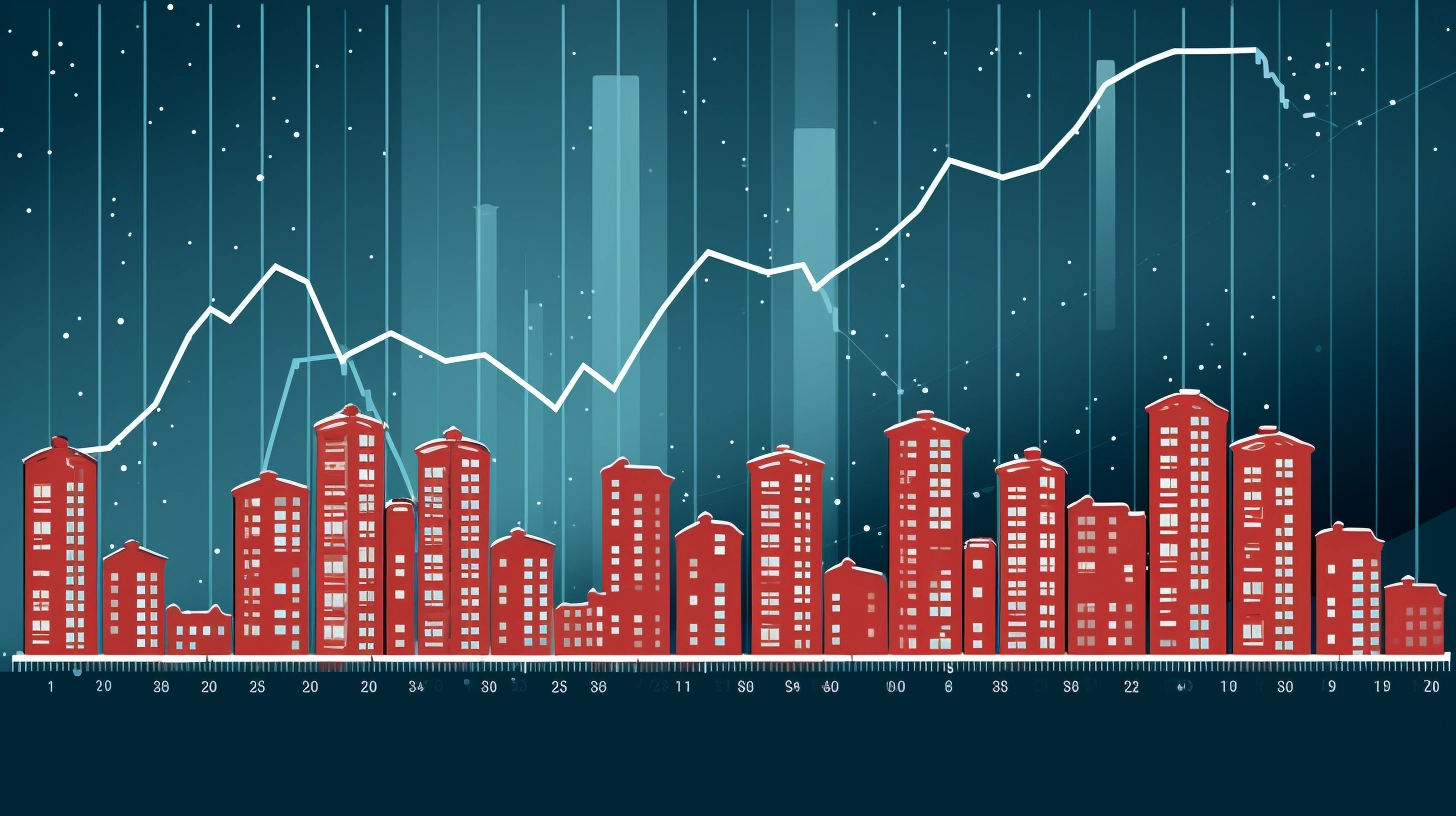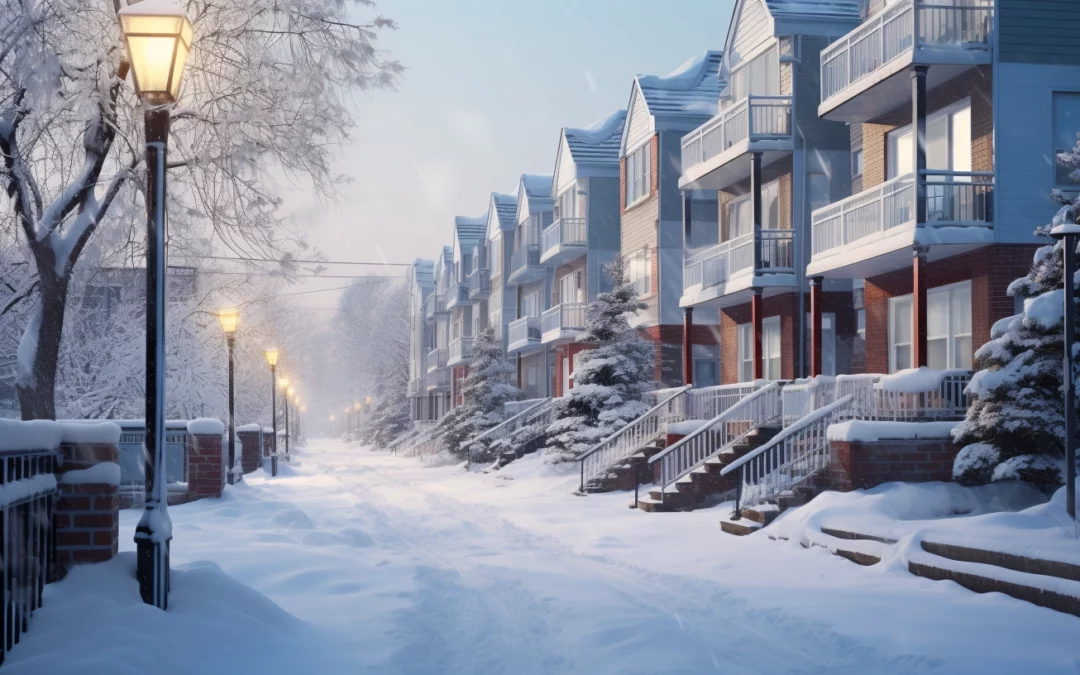Introduction to Winter Real Estate Preparation
As the crisp air sets in and leaves start to fall, savvy investors know it’s prime time to talk about winter real estate preparation. In my two decades in the industry, I’ve witnessed how the winter market can be a game-changer. Whether it’s maximizing ROI in winter property market or exploring profitable winter property investments, the colder months bring unique opportunities and challenges.
Historically, the winter market has been overlooked, often seen as the off-season in real estate. But let’s flip that narrative. Imagine a property, well-prepared for winter, standing out in a less crowded market. That’s where the real potential lies. It’s not just about winterizing; it’s about strategizing for seasonal real estate investment opportunities.
We’ll delve into practical winterization tips for investment properties, balancing cost with potential returns. Think about it – a well-maintained property in winter not only attracts more interest but also promises better occupancy rates. This is crucial for investments like multi-family units or commercial properties. And what about the financial implications? We’re talking about a significant impact on your ROI, especially in a market that many investors are yet to fully leverage.
But it’s not all about the immediate gains. Preparing your property for winter also means safeguarding its long-term value. This preparation can be a litmus test for a property’s resilience, a factor that’s increasingly important in today’s market.

Condos in heavy snow
Winter Market Trends in Real Estate
Now, let’s dive deep into the winter real estate market trends. It’s like uncovering hidden gems in a market many overlook. Historically, winter has been labeled the slow season. But here’s a twist – recent trends indicate a shift. With fewer properties listed, those that are, stand out. This isn’t just about selling; it’s a strategic play in real estate investment.
Picture this: a winter market where prepared properties are rare. They become hot commodities. Investors who understand this, like you, can leverage this scarcity. It’s not just a theory; data backs it up. Properties prepped for winter have shown not just steady but sometimes even increased interest. And here’s the kicker – this interest often translates into better negotiation power for sellers and a potentially higher ROI for investors.
But wait, there’s more. The winter market isn’t static. It’s evolving. Emerging trends suggest that buyers are becoming more active during these months, debunking the myth of winter dormancy in real estate. So, what does this mean for you? Opportunity. With the right moves, properties positioned in the winter market can yield surprising returns.
However, let’s balance optimism with caution. Winter investing isn’t a guaranteed jackpot. It requires savvy planning and an understanding of the market’s pulse. But for those willing to do their homework and invest in preparation, the winter market holds untapped potential. By staying ahead of these trends and adapting strategies accordingly, you could turn the so-called “off-season” into a period of significant gains.

Thermostat on wall next to a window providing a view of a snowy landscape
Essential Winterization Strategies for Property Investors
Let’s roll up our sleeves and talk practicality – winterization for investment properties. It’s not just about avoiding frozen pipes (though that’s important). It’s about strategic enhancements to boost appeal and value. First, let’s tackle exterior maintenance. This is your property’s handshake with potential buyers or renters. Simple steps like ensuring proper insulation, maintaining heating systems, and timely snow removal can dramatically enhance curb appeal. It shows care and attention, qualities tenants and buyers seek.
Now, let’s step inside. Interior upgrades are more than aesthetic; they’re about efficiency. In winter, heating costs can skyrocket. This is where smart investments come in. Think energy-efficient heating systems, quality insulation, and maybe even smart thermostats. These aren’t just selling points; they’re long-term value additions. They can significantly cut down utility bills, a huge plus for anyone looking to invest in your property.
But it’s not all about spending money. Sometimes, the best upgrades are about maintenance and foresight. Regular checks on heating systems, ensuring seals on windows and doors are intact, and even simple fixes like adding rugs or curtains for extra insulation can make a huge difference.
The bottom line? Winterization is a savvy mix of aesthetics, efficiency, and practicality. It’s about seeing your property through the winter lens and asking, “How can I make this space more appealing and comfortable?” This approach doesn’t just prepare your property for the cold months; it adds intrinsic value that resonates with buyers and renters alike. Remember, in the real estate game, the properties that stand out are the ones that are well cared for, no matter the season.

Condos in the snow with perfectly cleared streets
Winterizing Multi-Family and Commercial Properties
Zooming in on multi-family and commercial properties, winter prep takes on a whole new level. These properties aren’t just buildings; they’re communities and businesses that thrive on comfort and functionality. For multi-family units, winter is more than a season; it’s a litmus test for tenant satisfaction. Efficient heating, reliable snow removal, and ensuring walkways are safe and accessible become paramount. It’s not just about keeping the cold out; it’s about keeping the residents happy and reducing turnover, which can be costly.
For commercial properties, the stakes are different but equally high. Businesses operating from your property need to ensure seamless customer access. This means clear parking lots, safe walkways, and a warm, welcoming environment. Winter can impact a business’s bottom line – if customers can’t easily access a store or if employees are working in uncomfortable conditions, it affects performance and revenue.
What’s common between these two types of properties is the need for proactive planning. Regular maintenance checks, timely upgrades, and efficient responses to winter challenges are crucial. This isn’t just about the physical aspects of the property. It’s also about solidifying your reputation as a responsible and responsive property owner or manager.
Investing in these aspects of winter preparation might seem like a significant outlay at first. However, when you consider the long-term benefits of tenant and occupant satisfaction, coupled with reduced risks of property damage, it’s a sound strategy. These actions lead to better tenant retention, fewer vacancies, and potentially higher rents – all of which contribute to a healthier bottom line.
Remember, in the world of real estate investment, how you respond to the challenges of each season can set you apart. Winter readiness in multi-family and commercial properties isn’t just a necessity; it’s a strategic move towards sustained success.

Model of condos in the snow
Maximizing ROI with Winter-Ready Properties
Talking dollars and cents, winter property investment returns can be a bit of a hidden gem in the real estate world. Here’s the lowdown: properties that are well-prepped for winter often yield better financial outcomes. Why? Less competition, more demand for cozy, well-maintained spaces, and the potential for higher rents due to increased value.
Let’s break it down. When you invest in winterizing your property, you’re not just spending money; you’re creating value. For instance, upgrading insulation or installing efficient heating systems might seem costly upfront. However, these enhancements can lead to reduced long-term maintenance costs, lower utility bills, and the potential for charging premium rents. In the realm of multi-family and commercial properties, these upgrades can significantly impact your bottom line, attracting and retaining tenants who are willing to pay more for comfort and efficiency.
But it’s not just about the immediate returns. A winter-ready property is a resilient property. In the real estate game, resilience translates to sustainability and long-term profitability. Properties that withstand the winter elements with minimal issues are more attractive to buyers and tenants, ensuring steady income streams and maintaining property values, even in tougher markets.
Of course, like any investment, there’s a balance to strike. Over-investing in winterization without considering the specific needs and ROI potential of your property can tip the scales unfavorably. It’s about smart investments – understanding the local market, the specific demands of your property type, and how best to enhance its winter appeal and functionality.

Illustration of snow covered condos and men standing in the street
Exploring Varied Views on Winter Property Investments
In the realm of winter real estate investment, opinions are as varied as the properties themselves. It’s crucial to understand these differing perspectives to make informed decisions. Some investors see winter as a downtime – a period to avoid transactions due to perceived low activity. They argue that properties don’t show as well in the winter, dissuading potential buyers. This viewpoint isn’t without merit; winter can present challenges like inclement weather making property visits less appealing.
However, another school of thought embraces winter as a season of opportunity. Less competition in the market means properties that are available can capture more attention. There’s a niche but real demand in the winter market – people relocating for jobs, investors looking for off-season deals, or families wanting to settle before the new year. For these buyers, a well-prepared property in winter is a beacon.
Then there are those who focus on the financial aspect. They contend that while winter might offer less competition, it could also mean potentially lower offers. But this is exactly where savvy winterization and marketing come into play. A well-maintained, attractive property in winter can defy the odds and fetch a good price.
What’s important is to not get swayed by one perspective alone. As an investor, balancing these views is key. Yes, winter has its challenges, but with challenges come opportunities. It’s about finding that sweet spot – investing in the right upgrades, choosing the right properties, and timing your moves strategically.
In essence, the diverse perspectives on winter real estate investments highlight the need for a nuanced approach. It’s not about following one strategy blindly but about being adaptable, informed, and strategic. The winter market, with its complexities and opportunities, is a test of an investor’s ability to navigate different terrains. And for those who do it right, it can be a rewarding journey.

Line chart with depictions of condos and snow
Navigating Risks in Winter Real Estate Investment
Investing in real estate during winter isn’t just about seizing opportunities; it’s also about smart risk management. Let’s explore some scenarios and how to navigate them. First up, the classic: a major winter storm hits, and your property is in the crosshairs. This is where your winterization efforts pay off. Properties prepared for such events suffer less damage, ensuring continuity in occupancy and rent collection. But it’s more than just physical prep; it’s also about having the right insurance and contingency plans in place.
Another scenario? The property doesn’t sell or rent out as quickly as anticipated. Winter markets can be unpredictable. To mitigate this risk, it’s vital to have a financial buffer. This ensures you’re not in a position where you’re forced to accept lower offers out of desperation. Additionally, creative marketing strategies tailored for winter can help your property stand out.
Then there’s the risk of over-investing in winterization. Yes, a well-prepared property is crucial, but there’s a fine line between necessary upgrades and over-the-top improvements that don’t yield a significant ROI. The key is to focus on cost-effective improvements that enhance comfort and efficiency without breaking the bank.
Lastly, let’s consider the long-term. Climate change is altering weather patterns. Properties that are resilient and adaptable to varying winter conditions will likely hold their value better and appeal to a broader market. Investing in sustainability isn’t just eco-friendly; it’s becoming increasingly economically savvy.
In essence, successful cold weather investing hinges on anticipation and preparation. It’s a blend of being proactive about potential issues and reactive in an efficient, calculated manner when challenges arise. By understanding and managing these risks, you can turn winter into a season of rewarding investment opportunities.

Foam plastic insulation installed in the sloping ceiling of a new frame house
Winterizing: The Key to Unlocking Real Estate Success
As we wrap up this chilly journey, let’s crystallize our insights on winterizing for real estate success. Think of winterization not just as a seasonal chore, but as a strategic move in your real estate playbook. It’s about understanding the nuances of the winter market and using them to your advantage. From enhancing curb appeal and ensuring efficient heating in your properties to staying ahead of market trends and managing risks, winterizing is a multifaceted endeavor.
Remember, in the unique landscape of winter real estate, properties that stand out are those that are well-prepared. They not only attract more attention but also command better value. This approach is crucial, whether you’re dealing with multi-family units, commercial properties, or looking to sell in a quieter market. The effort you put into preparing your properties for the winter not only safeguards them against the elements but also sets the stage for better occupancy rates, sustained income streams, and higher overall returns.
Moreover, as we’ve seen, the winter market is evolving. With changing climate patterns and technological advancements, what worked yesterday might not be enough tomorrow. Staying adaptable, informed, and proactive is key. This means not just reacting to current trends but anticipating future shifts and preparing for them today.
In conclusion, the winter real estate market, often underestimated, holds significant potential for the informed and prepared investor. By embracing winterization, you’re not just protecting your investment; you’re enhancing its value and appeal. So as the temperatures drop, let your enthusiasm for winter real estate opportunities rise. With the right strategies in place, you can turn the cold season into a hotbed of real estate success.

